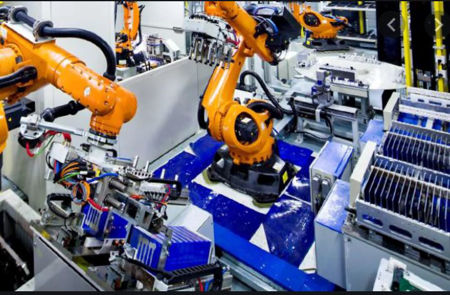Berkeley Lab’s new battery technology using lithium batteries for electric vehicles and power electric vertical takeoff and landing aircraft can extend driving distance between recharges and provide extra power.
“The electric vehicle (EV) industry has been looking for a rechargeable battery that can deliver hundreds of miles on a single charge, leading researchers to seek a replacement for graphite anodes currently used in EV batteries with lithium metal anodes. Researchers at the Department of Energy’s Lawrence Berkeley National Laboratory (Berkeley Lab), and Carnegie Mellon University, reported a potentially gaming-changing solution – a new class of soft, solid electrolytes that are made from polymers and ceramics that suppress the formation of dendrites in lithium metal anodes that can cause battery failure,” Gina Roos, editor-in-chief of Electronic Products noted.
The use of this new class of electrolytes could be a major game changer in the mileage limits of electric vehicles. With new safety measures required for EVs, this new technology could provide solutions to some requirements.
Previously thought for decades, solid electrolytes like ceramics are not the best method of preventing dendrites. Berkeley Lab researchers “took a soft, solid electrolyte approach to the problem. Key to the design, said researchers, is the use of soft polymers of intrinsic microporosity, or PIMs”.
The research found these new flexible solid batteries could be made “into rolls of lithium foils with the electrolyte as a laminate between the anode and the battery separator. Called lithium-electrode sub-assemblies, or LESAs, they can be used as drop-in replacements for traditional graphite anodes, which allows battery manufacturers to use their existing assembly lines”.
The new electrolyte can be used by battery manufacturers to produce safer lithium metal batteries with longer cycle life and high energy density.
As the demand to meet green regulations increase and the popularity of electric vehicles grows, new batteries able to provide longer distances between charges are being worked on. Pocket Lint has a thorough overview of battery development here. An aluminum-air battery was able to get 1,100 miles from a charge, so alternatives are being developed constantly.
And the quality of the work done at Berkeley Labs is reflected in the 13 Nobel Prizes won by scientists there.
temas bize:
 TR
TR
 English
English
 Chinese
Chinese
 Italiano
Italiano
 Portuguese
Portuguese
 Deutschland
Deutschland
 French
French
 Russian
Russian
 Japanese
Japanese
 Turkish
Turkish
 Korean
Korean
 Spanish
Spanish
 hesabım ve siparişlerim
hesabım ve siparişlerim

